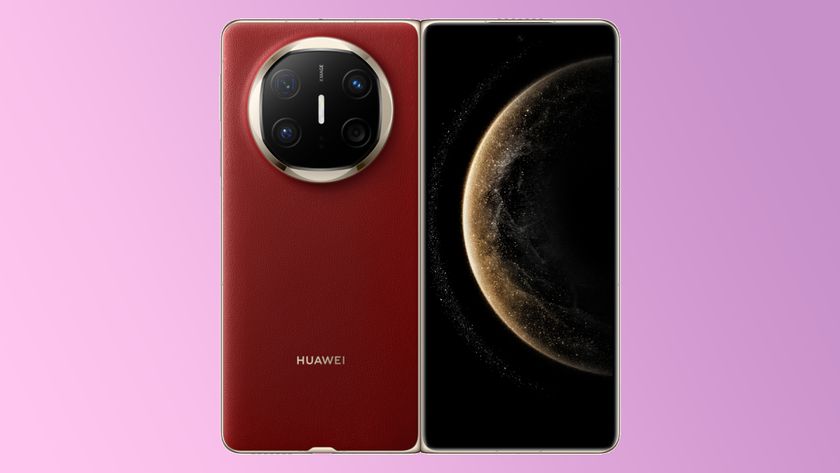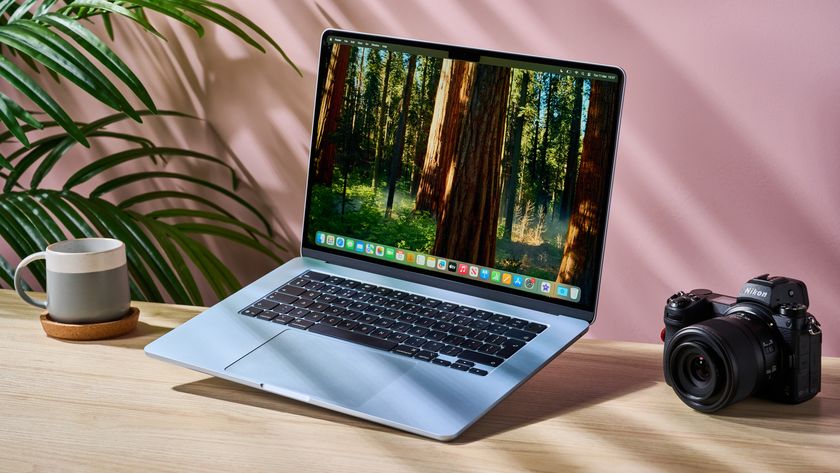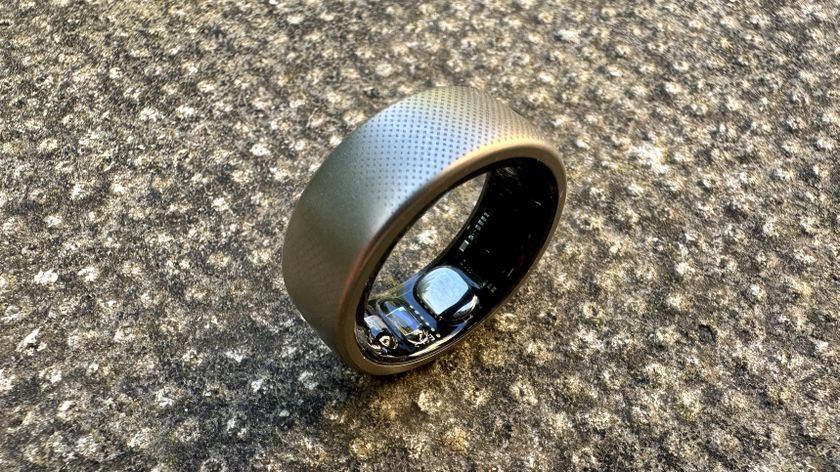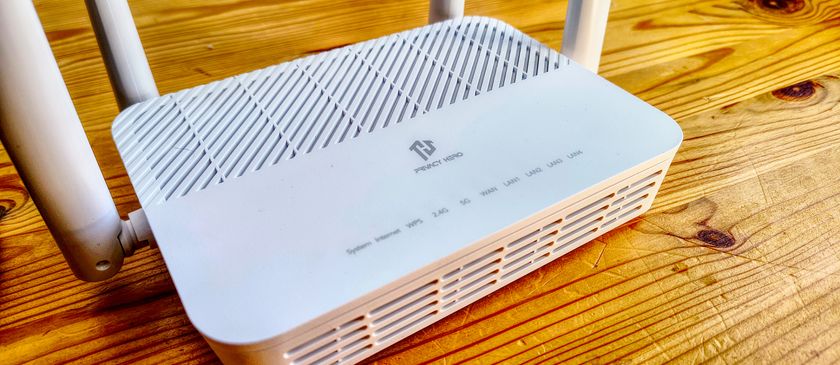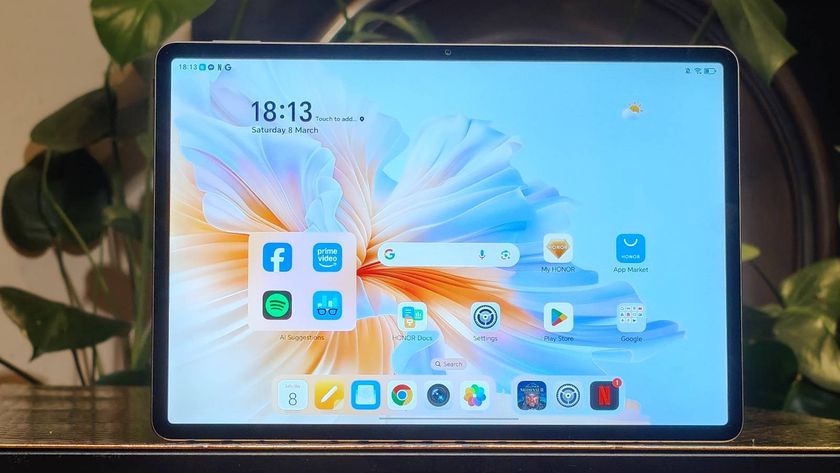TechRadar Verdict
When is a great screen, strong performance, a fine camera and a desirable design not enough in a smartphone? When it comes with a ludicrous price tag, like the Huawei Mate 9 Porsche Design.
Pros
- +
Innovative camera
- +
Beautiful design
- +
Great QHD AMOLED display
Cons
- -
Ridiculously expensive
- -
Emotion UI drags experience down
- -
Fingerprint sensor = fiddly home button
Why you can trust TechRadar
The Huawei Mate 9 Porsche Design is like a concept car, intended to illustrate one possible idealized path for the world’s third biggest smartphone maker, as it strives to close the cachet gap with Samsung and Apple. Unfortunately, it seems to be a bit of an evolutionary dead end.
Huawei sells a ridiculous number of phones in China - the world’s largest smartphone market, and 2015’s Nexus 6P showed that it could stand up to the very best premium smartphone makers in the world for pure hardware quality.
While the Huawei Mate 9 Porsche Design is a beautiful phone that shares several the Nexus 6P’s core attributes, however, it’s an impossible phone to recommend to all but a very select group.

Huawei Mate 9 Porsche Design price
Weight: 169g
Dimensions: 152 x 75 x 7.5mm
OS: Android 7
Screen size: 5.5-inch
Resolution: 2560 x 1440
CPU: Kirin 960 octa-core
RAM: 6GB
Storage: 256GB
Battery: 4,000mAh
Rear camera: 20MP + 12MP
Front camera: 8MP
At €1,395 (around £1,200, $1,500, AU$2,000), it’s an astonishingly overpriced indulgence that’s only really suitable for brand addicts and those who revel in exclusivity.
Of course, with availability restricted to the Porsche Design website and stores around the world, and with no official launch in sight for the US, it’s pretty clear that this is precisely the rarified market the Huawei Mate 9 Porsche Design is being targeted at.
The question, then, isn’t simply whether the Huawei Mate 9 Porsche Design is a good phone (spoiler alert: it is). It’s whether the Huawei Mate 9 Porsche Design offers something better than premium phones at half the price.
My other phone’s a Porsche
- Very different to the standard Mate 9
- Flagship specs - but you're largely paying for the branding
The key selling point for the Huawei Mate 9 Porsche Design, and the thing that’s being used to justify that huge price, is right there in the name. This is a joint venture between manufacturer Huawei and Porsche Design.
You might wonder why someone would slap a car brand on a smartphone, but Porsche Design doesn’t just deal in Porsche-branded tat, but rather dabbles with industrial design in the fields of fashion, kitchenware, timepieces, and yes - electronics.
This isn’t even the first Porsche-branded handset - phone fanatics will doubtless recall the work done with BlackBerry, such as the BlackBerry Porsche Design P’9982.

As a result of this, the Huawei Mate 9 Porsche Design is actually a very different beast to the regular Huawei Mate 9. We’d argue that it’s a completely different phone, with surprisingly few shared components.
Everything from the size, resolution, and design of the display to the positioning of the phone’s fingerprint scanner is different. Internally, while the processor is the same as the vanilla Mate 9’s, it’s bolstered by 50% more RAM and packed out with four times the storage.
We’ll go into the specifics of each point in due course, but the point is this: you really are paying for a unique phone here rather than a lazily rebadged Huawei Mate 9.
Of course, when you look at the price differential, you’d jolly well hope there’d be some major differences. The normal Huawei Mate 9 costs €699 (around £620, $775, AU$1,000), which is half the price of its swanky brother.

Included in the Porsche Design’s price you get a snazzy box and a bundled-in folio case, that has a long plastic window running up the right-hand third of the front flap.
The phone’s AMOLED display readjusts to show the time, date and weather widget and the number of steps you’ve taken that day - but it’s not always-on, and it’s a little dim for outdoor use.
The case itself is a curious thing - simultaneously premium (with a leathery finish) and cheap-feeling (it’s a little flimsy). But it’s a welcome addition nonetheless. It occurred to us on more than one occasion that we were carrying something enormously expensive around in our jacket pocket, so having the option of a case straight out of the box is a good thing.

One of the more distinctive elements of the Huawei Mate 9 Porsche Design is the Leica-branded camera it shares with the plain Mate 9 and the Huawei P9 before it.
This uses a rather unique dual-lens setup that takes a very different approach to, say, Apple’s. Rather than playing on the difference in focal length like the iPhone 7 Plus, here the point is that there’s one color sensor and one monochrome sensor, which combine to create more detailed images.
We’ll discuss whether this yields results in the camera section, but it’s certainly a distinctive element - and arguably a more meaningful brand partnership than the one with Porsche Design.
Design and display
- Beautiful curved-glass and metal design
- Punchy 5.5-inch QHD AMOLED display
- Fingerprint scanner is not always responsive as a home button
We don’t know the full extent of Porsche Design’s influence on the look and feel of the Huawei Mate 9 Porsche Design. The recently announced Huawei Mate 9 Pro seems to be a debadged Mate 9 Porsche Design with a slightly different finish, so it may not be that pronounced. Either way, this is undoubtedly a handsome phone.
The old joke about Porsche cars is that they tend to look exactly like the previous model, but the same accusation can’t be levelled here. Huawei has never built a device quite like this before.
From the front it’s an inky black monolith of a thing, with the stand-out feature being the way the left and right edges curve away into the all-metal body. That metal rear section has a matt, brushed effect that combines with the Graphite Black color to give of a sort of diffused reflection. It also seems to show off dirt and grubby fingerprints to a chronic degree.

There isn’t an inch of plastic on display here, with just a couple of subtle antenna lines towards the top and bottom of the phone’s rear side.
It sits nicely in the hand, and there’s a reassuring heft to its 169g weight - despite being a relatively slim 7.5mm.
We wouldn’t say that the Mate 9 Porsche Design is wholly original. We’ve seen those curved edges on the Samsung Galaxy S7 Edge and the BlackBerry Priv, while the rear of the phone calls to mind any number of well-built Android devices from the OnePlus 3 to the HTC 10.
The matt metal rim with its bevelled edges and drilled-hole speaker (alongside a USB-C charging port) is another Samsung-like touch, as is the lozenge-like home key.

Not that the latter is actually a physical button here. Rather, this is a combined fingerprint sensor and capacitive home button. The Huawei Mate 9 had this positioned on the back of the phone.
This represents a major difference between the two Mate 9 devices, and we prefer the approach here, as the Huawei Mate 9 Porsche Design’s fingerprint sensor is more accessible in more situations.
In general use you’ll use either the thumb of your holding hand or the forefinger of your other hand to unlock your phone, while you can also gain access when it’s lying flat on a table. Just try any of that with a rear-mounted equivalent.
In use, the Mate 9 Porsche Design’s home button has mixed benefits. It’s an extremely fast and reliable fingerprint sensor, but we found it to be a less-than-satisfactory home button.
A few times when we were in an app and wanted to jump back to the home screen we would touch the home key and nothing would happen. So we’d press again, and this time hold a little longer - at which point the Google Now on Tap function would activate.
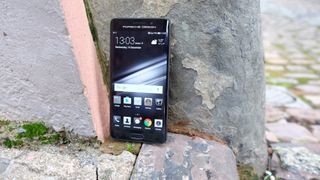
We don’t know if this is a hardware issue or a problem with Huawei’s Emotion UI - we suspect the latter. You learn to live with it and work around it, but this is a lot less acceptable in a phone that costs approaching twice as much as an entry-level iPhone 7 Plus or a Google Pixel XL with their flawless inputs.
The Mate 9 Porsche Design’s curved 5.5-inch QHD display is an absolute treat to look at regardless of comparisons. But stack it next to the Huawei Mate 9’s 5.9-inch, 1080p LCD display, and you’ll see that it’s a completely different beast.
There's a massive improvement in sharpness here. You could argue that the larger Mate 9 display would have benefitted more from all those extra pixels, but the main strength of the Porsche Design model’s screen isn’t in its sharpness.

It’s the fact that it’s a very crisp AMOLED display with colors that are punchy without being unnatural or garish, and none of the yellowy-red whites that used to plague AMOLED displays.
Even if you do find the picture too warm (or too cold for that matter), you can fine-tune it using Huawei’s powerful built-in color temperature tool.
Of course, you can get a display that’s at least as good as this from the Samsung Galaxy S7 Edge for half the price. But in terms of Huawei phones, this marks a welcome return to the QHD AMOLED technology of the Nexus 6P.
There’s also the fact that Huawei looks set to release its own Daydream VR headset in 2017, which should make full use of the Porsche Design’s pixel-dense display.

